Trademark Image Search
Most Advanced Image Recognition For Trademark Law
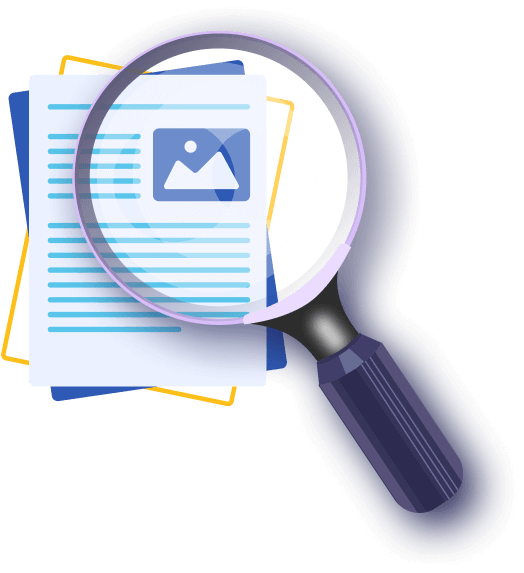
Finding similar images is one of the most critical and time consuming tasks in trademark clearance search, trademark watch, and brand protection. The scale of images to be examined and the diversity of them are simply prohibitive for any manual search and monitor by even the teams of the most experienced examiners.
Therefore, a search engine, as easy to use as Google where you simply upload an image and get instant results of truly “similar” images, is in great demand. Although there are such offerings in the market, they are usually quite expensive and less effective. We argue that the market is like where the search market was, i.e., the time with AOL and Yahoo!, before Google was born.
In this product introduction series, we’re going to present Huski AI’s trademark image search engine. In the series, you’ll see some of the most impressive results the state-of-the-art image recognition has to offer. In the end of the series, we hope you’ll reach the same conclusion as ours: The “Google” for trademark search was just born.
Design Search Code
Traditionally trademark attorneys relied on the design search code to “describe” the “content” within an image and tried to retrieve other registered trademark images with the same design search code, in hoping that they have similar “content”. Although this approach was effective occasionally, often times it is hard to learn, hard to use, and hard to get meaningful results.

AI Driven Image to Image Search
01
Let’s start with the most challenging cases. You give an image to the machine. It could be any image. Then you want the machine to tell you which part of the image is which trademark, or if any trademark appeared at all.
For example, your input could be one of the Michael Jordan dunking pictures. Magically, the machine tells you that the region around the yellow box looks like some trademarks, and here we go. The AI has just recognized the "air jordan" trademark from that image out of 3,000,000 pictorial trademarks without any hints or human intervention.
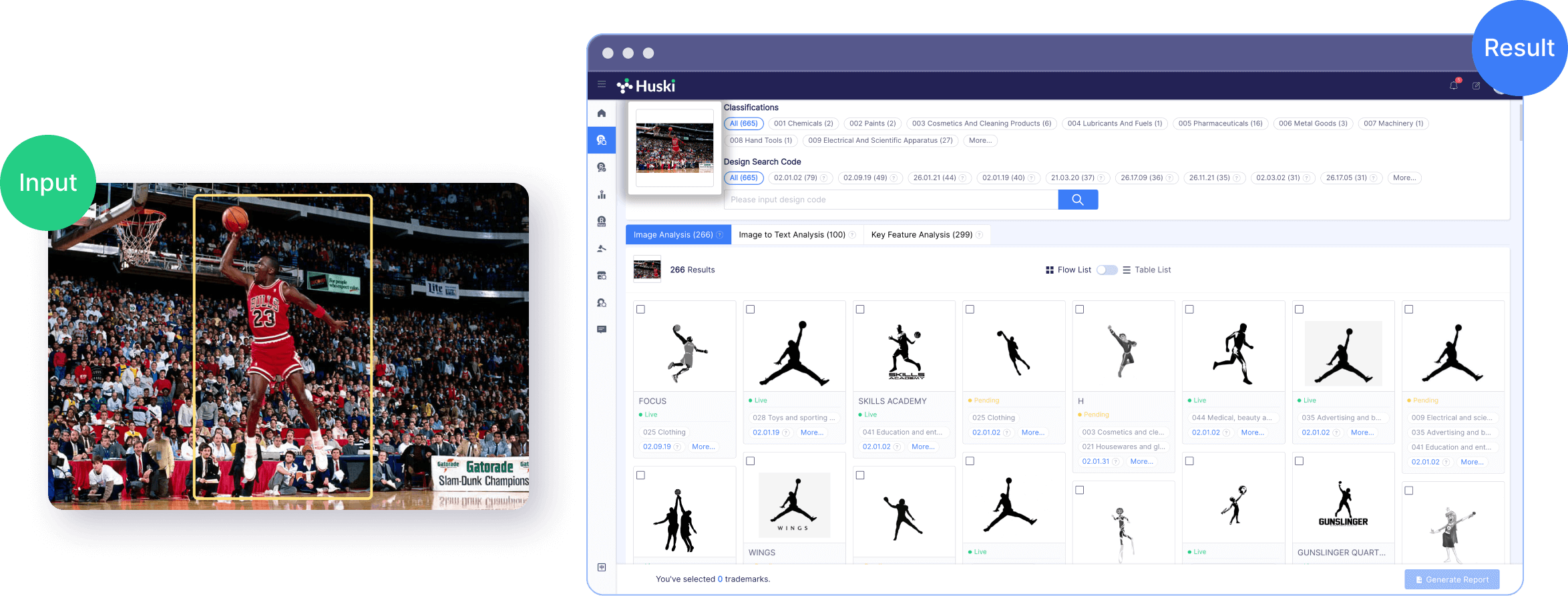
If you think the model got lucky, then think different after looking at more evidence as the following.
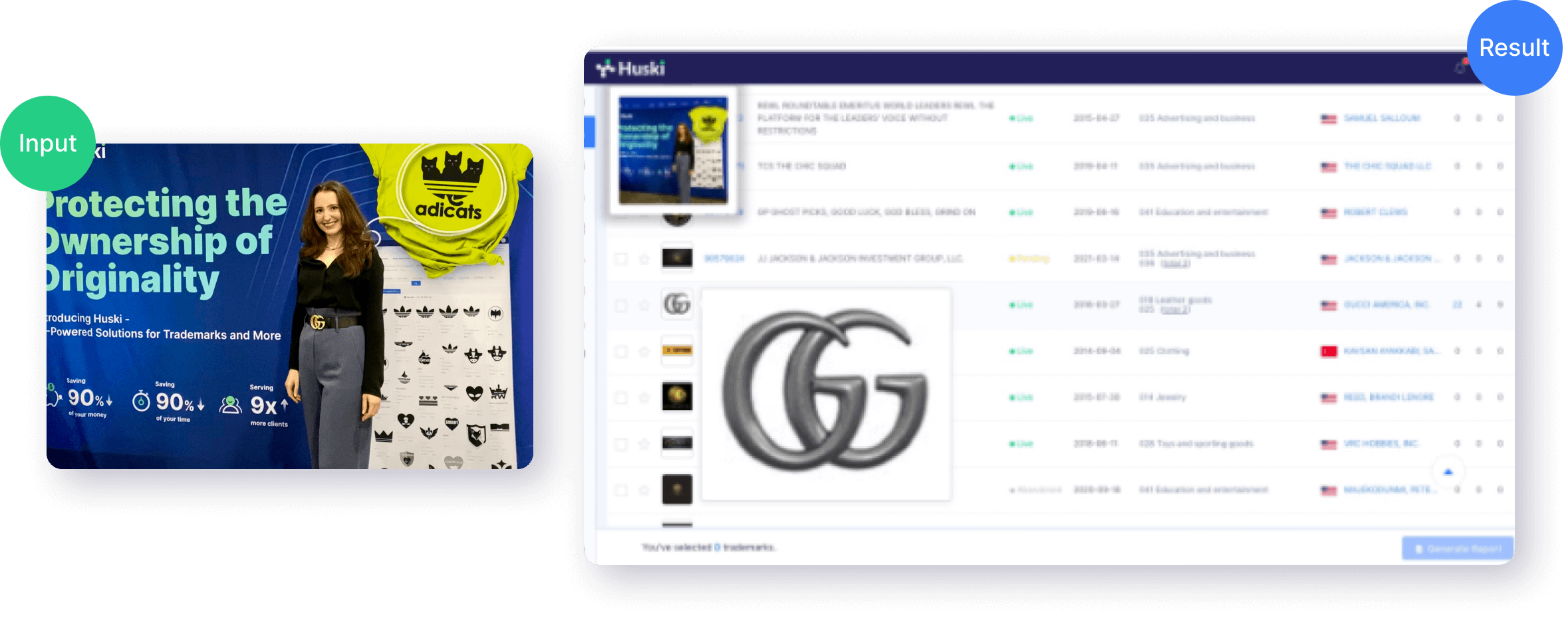
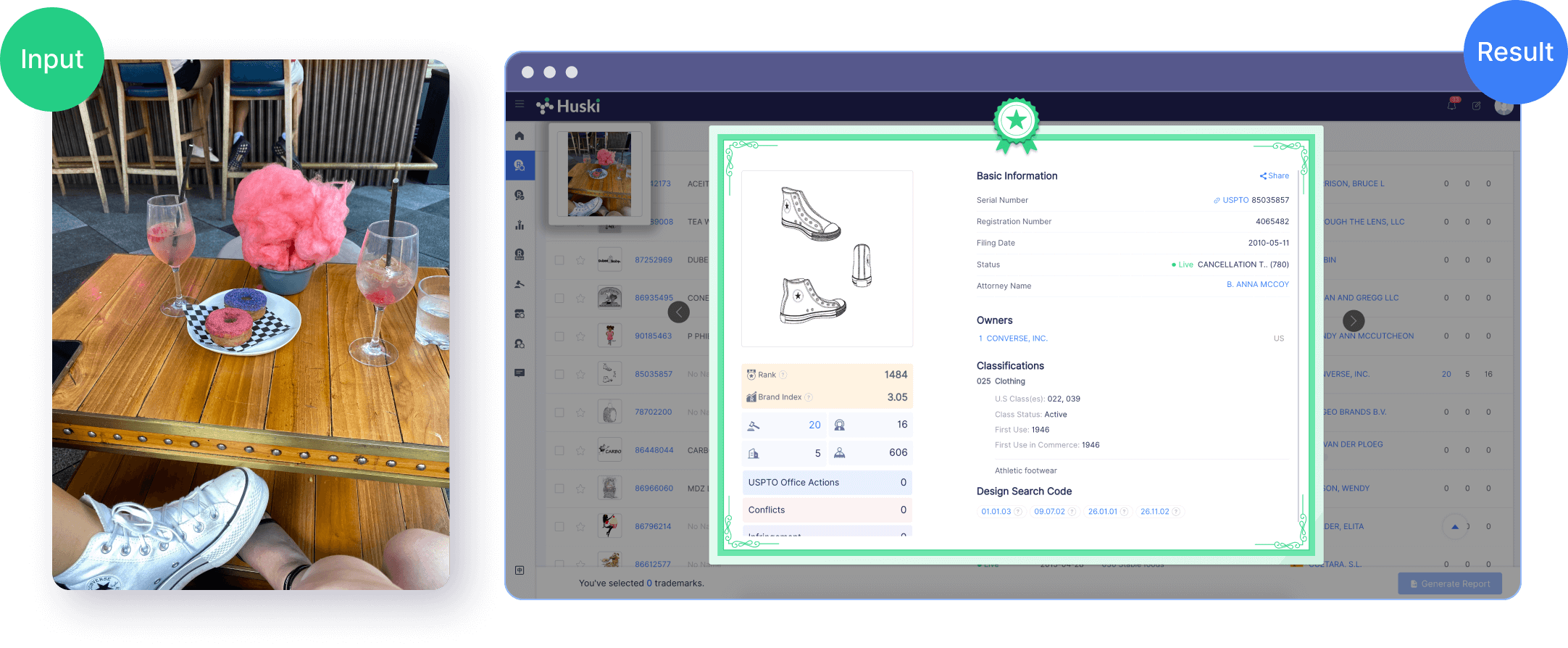
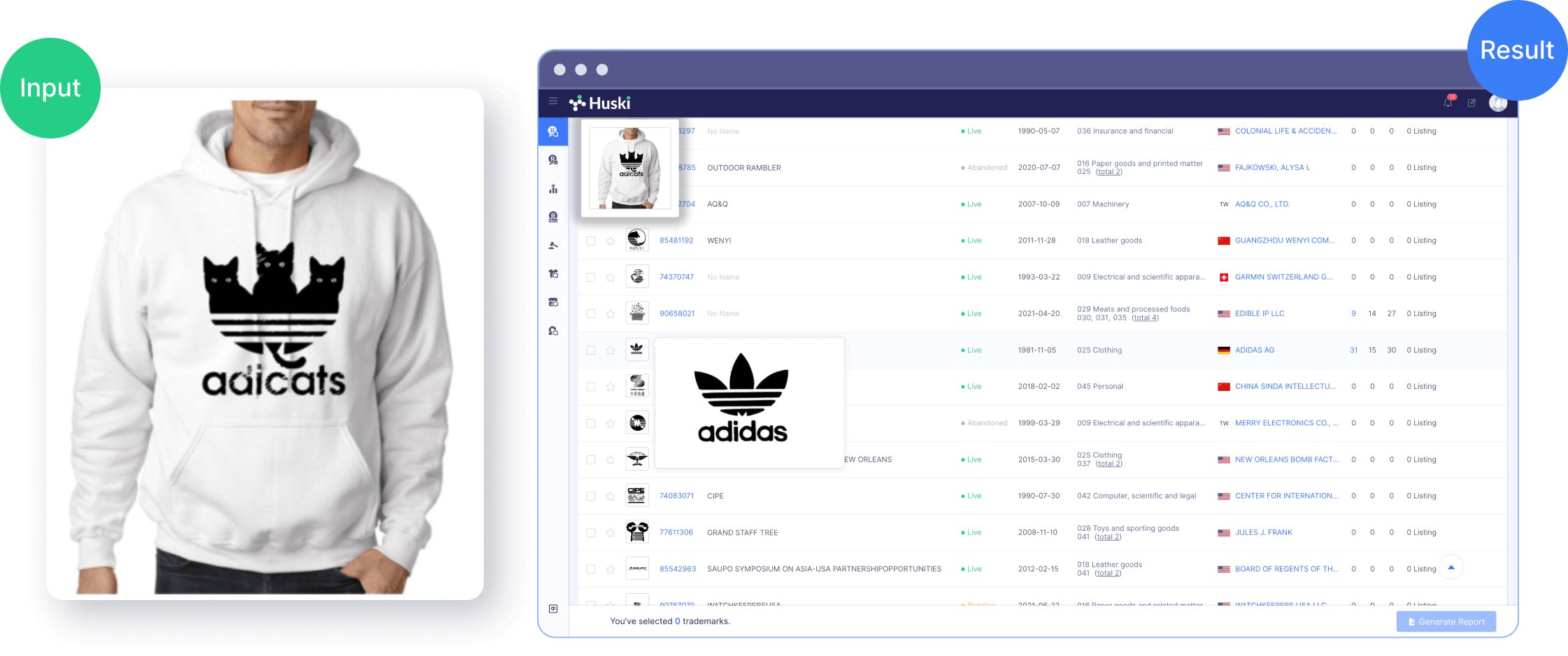
What’s more interesting is that the query image does NOT have to be perfect. It could be any image at all, even one you took with your phone with distorted angle, strong backlight, or motion blur for example.
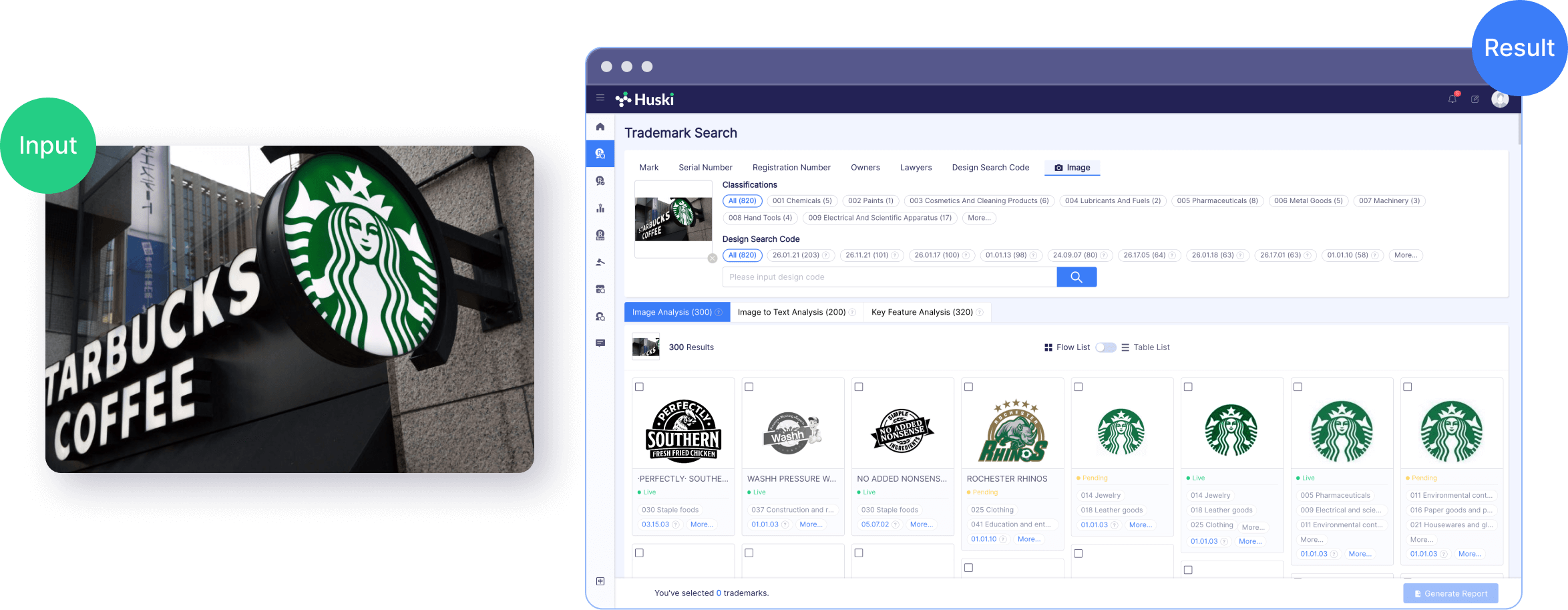
If a search engine can automatically “know” which parts of the image are trademarks, it should be easier for it to know whether the entire image is similar to some trademarks or brand logos. And that’s what we’ll show in this section.
02
For example, in the search below, the input is the classic Marilyn Monroe posture, and the results contain the trademark they registered after this posture (6th in first row).
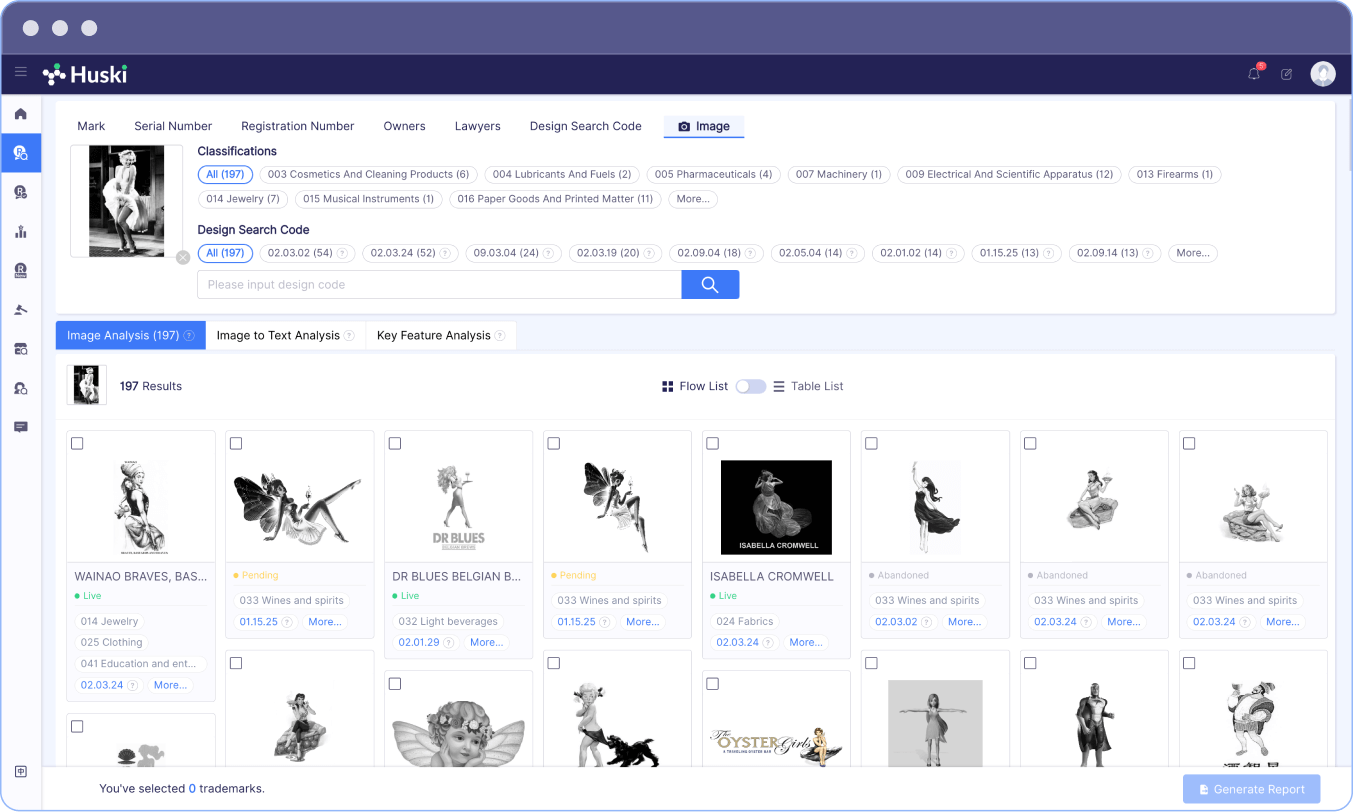
More example below.
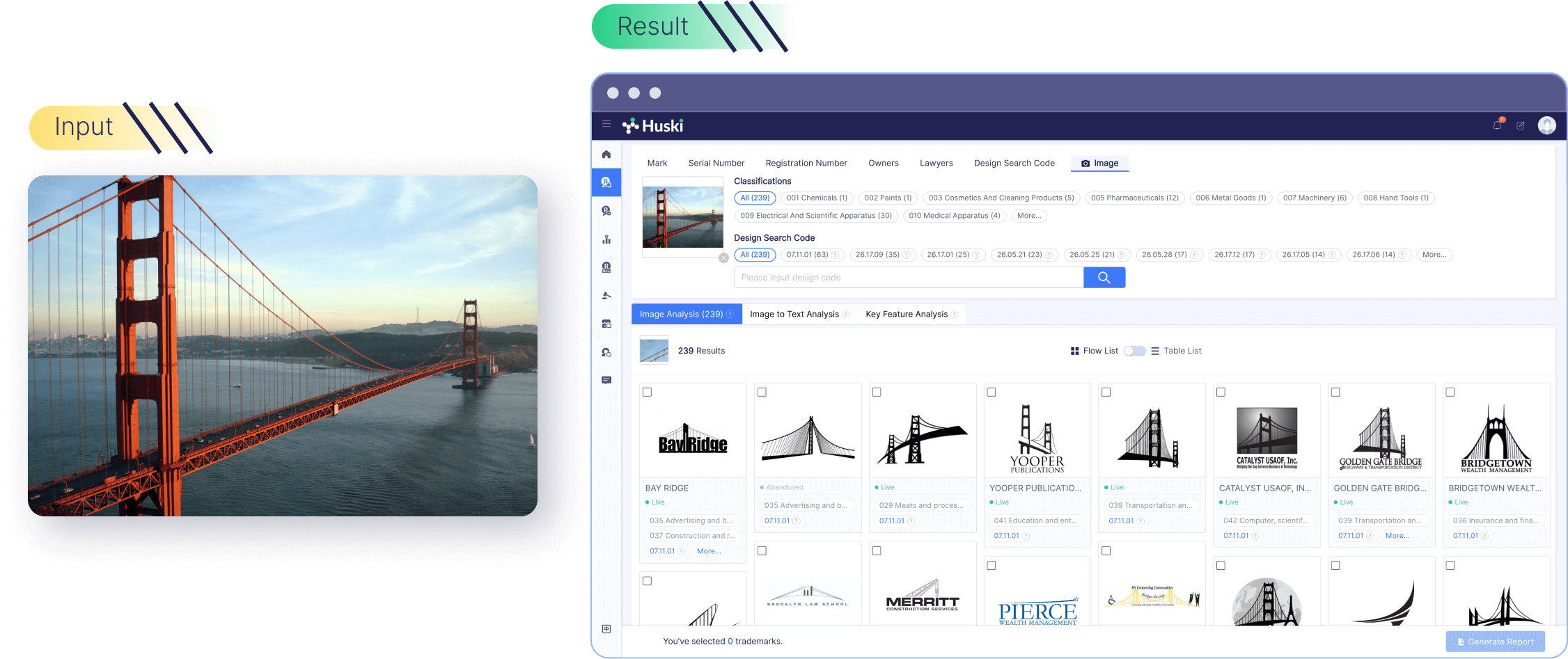
As you see, the search system have learned how to abstract the important information from a picture, and use that to match against other trademarks in the database. As long as the essence is there, the search engine can match it with the correct one.
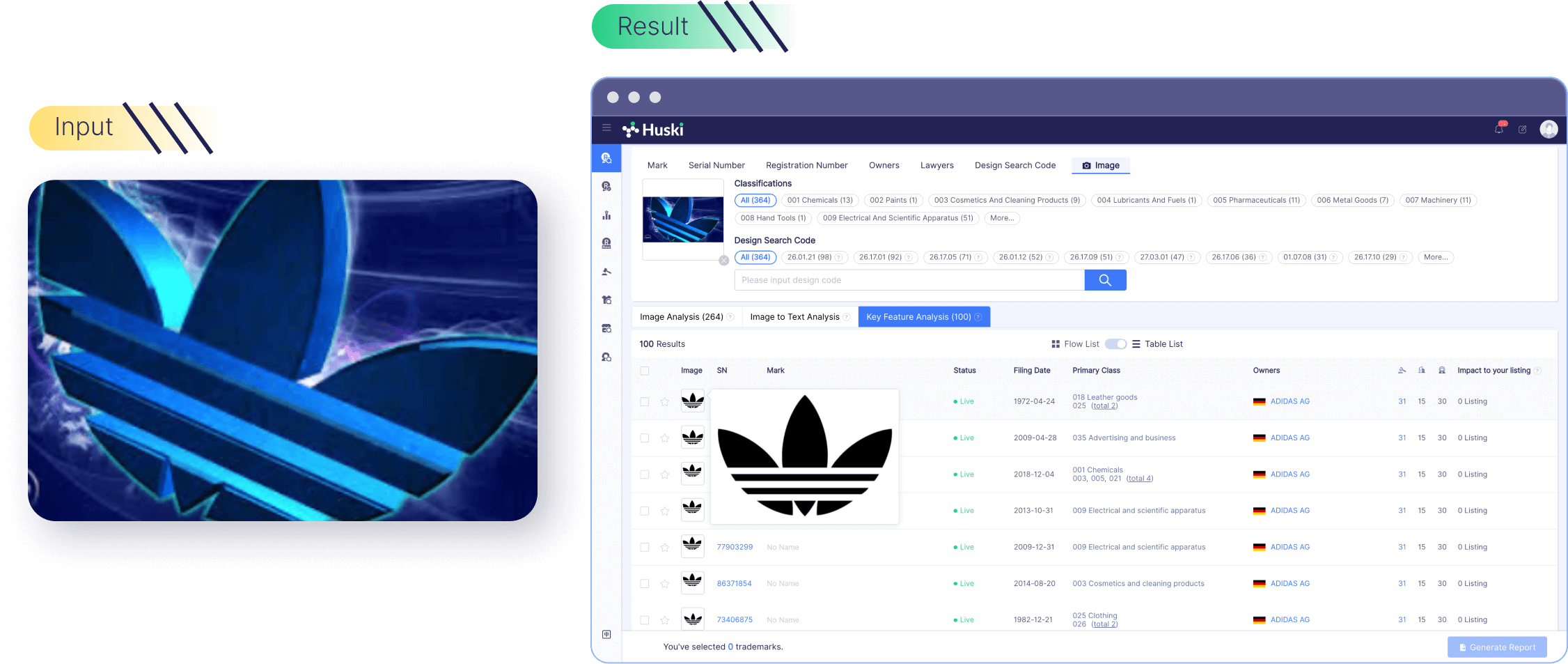
03
A design image is usually clean and it has the ‘digital’ look and feeling. Most of the trademark images are like that. When they apply for a trademark, they submit a clean design image of the trademark. Therefore, this image search in this category is easier than the previous two. Needless to say, if our search engine can handle the previous situations, it never shies away here.
First, let’s see the Transformer’s autobots logo. The input picture is generally very dark. Although human can see the content really clear, it is considered blurry and low contrast for machines. Our search engine still did a good job in finding other autobots, and even decepticons.
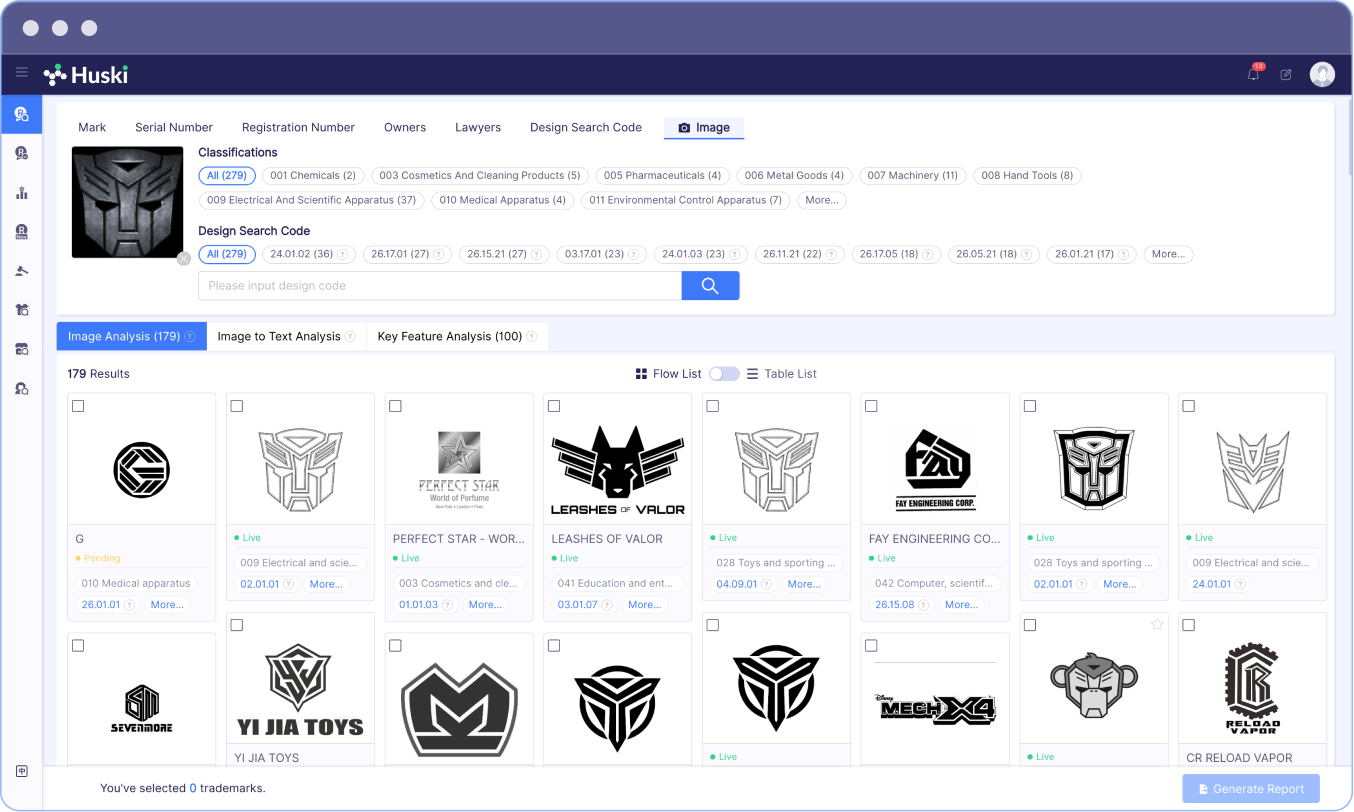
This case below is also tricky. The input is a NFT design of a Nike shoe. We found that Nike had trademarked a similar design of one of their shoes.
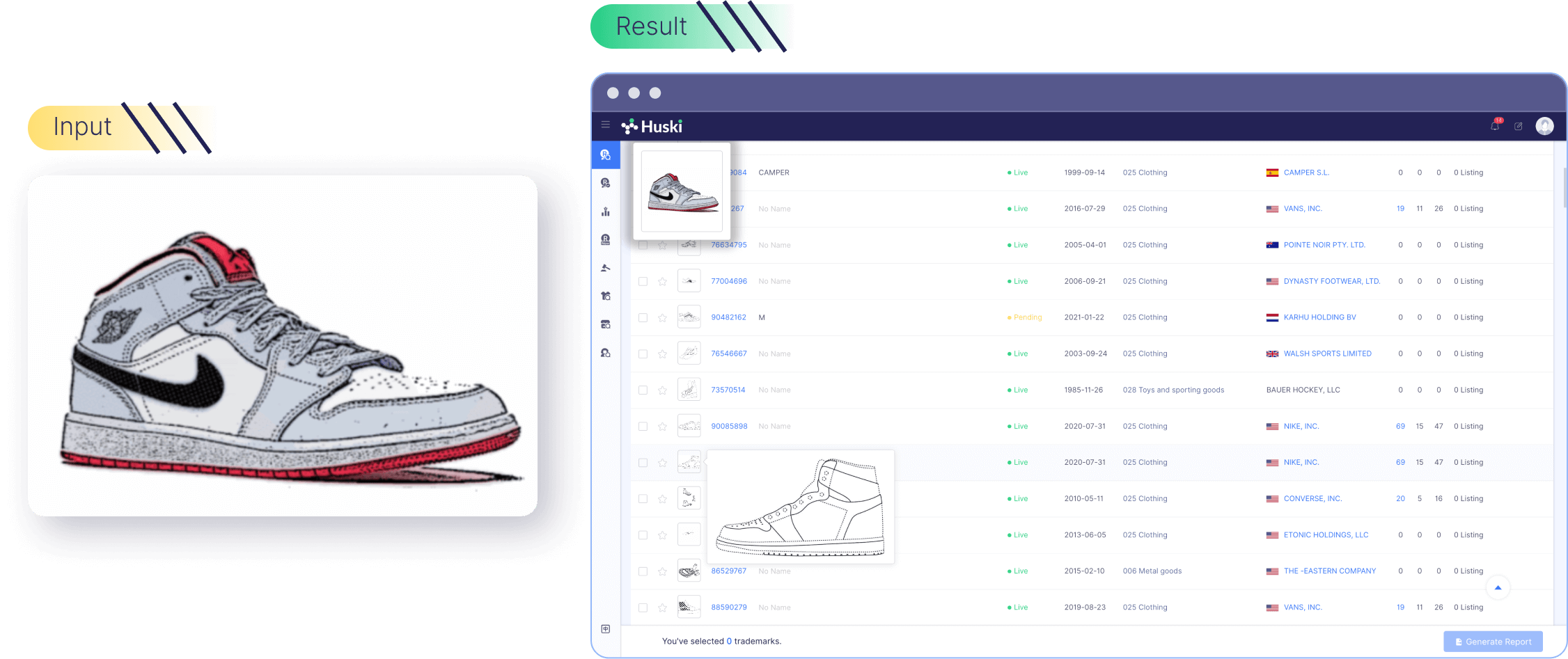
This is considered to be the easiest case which your input image is exactly one of the trademark images and you want to find which one.
04
In the market, there are a couple of other image search offerings which seem to fall in this category. It is not clear about their performance in the previous three categories.
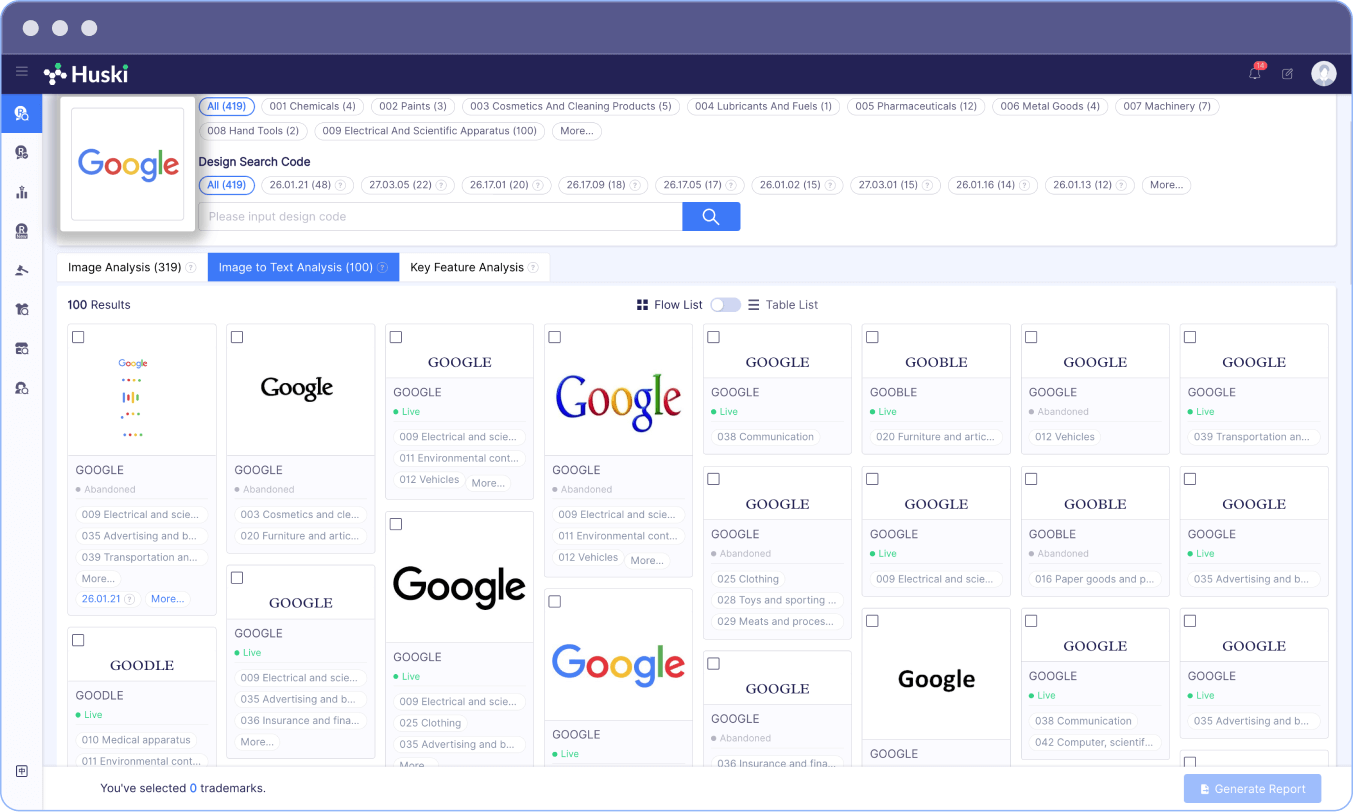
05
It is clear that often times the texts in the trademark or product images play important role. However, it is not trivial to recognize them in the image due to the design and variations of the art forms of texts.
Below we’re showing some examples of how well our search engine recognizes texts.
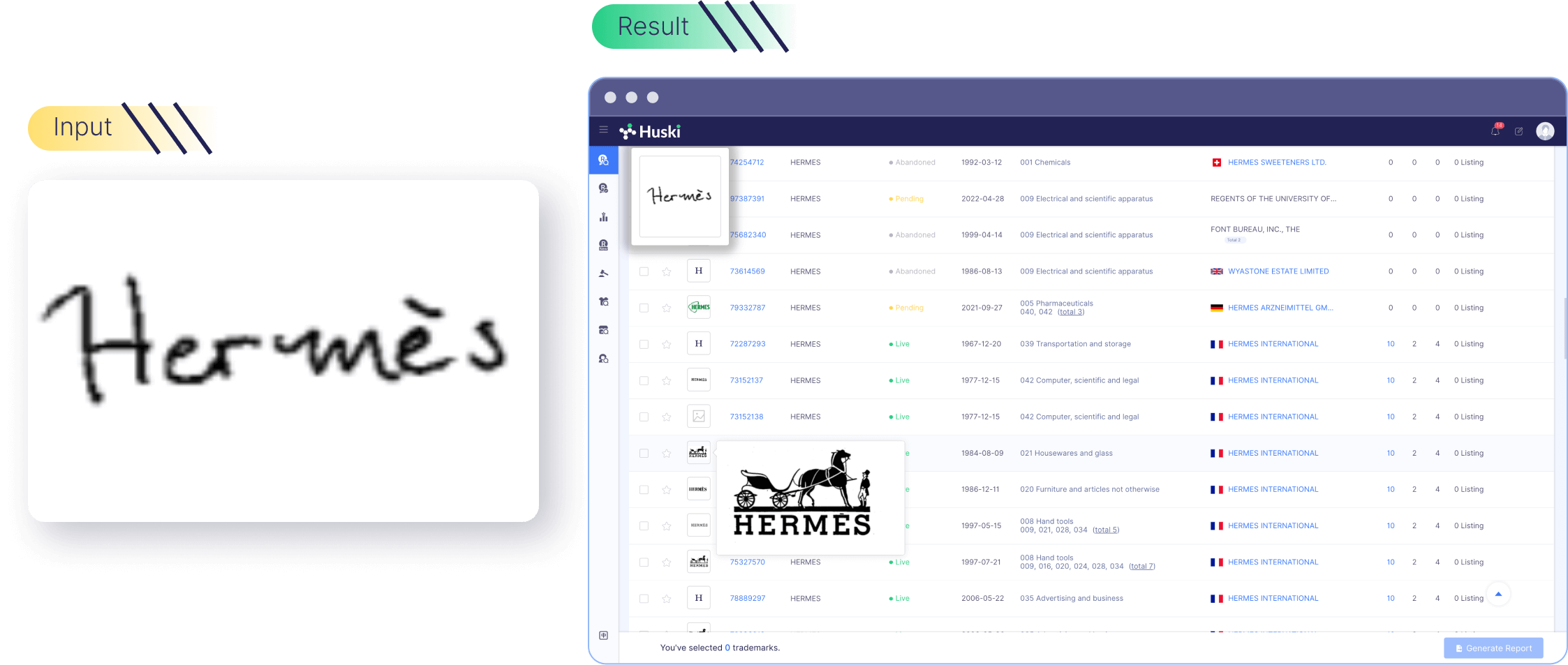
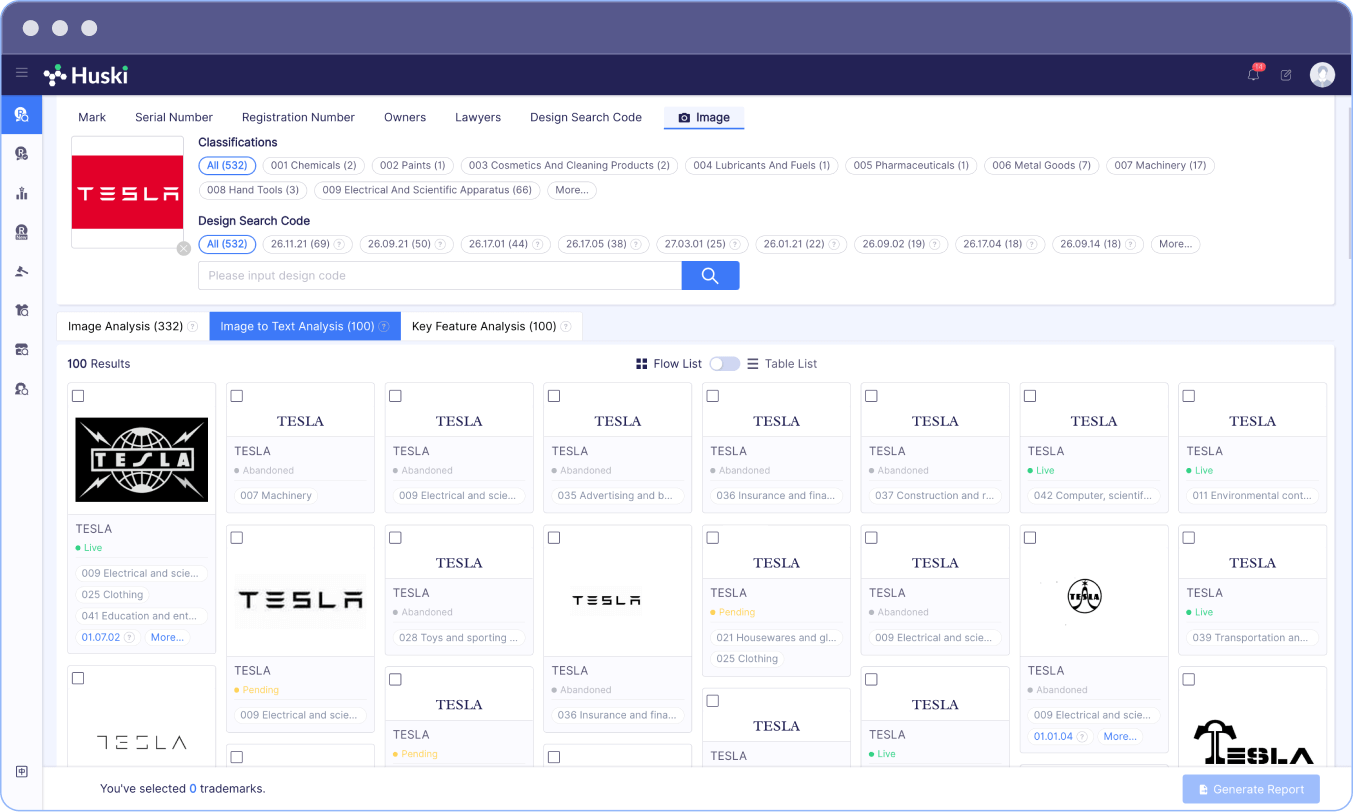

Conclusion
In this product intro, we went through some situations in the trademark image search domain, and we showcased a few real trademark search results during our daily uses. Our AI model is still learning as we speak and it gets smarter by the day. More importantly, its intelligence does not come from learning from human. We’re going to write another intro to explain how it learns.
Hope you enjoy this article. Try the image search here. Sign up or Login.
Read more about our product intros or our blogs.